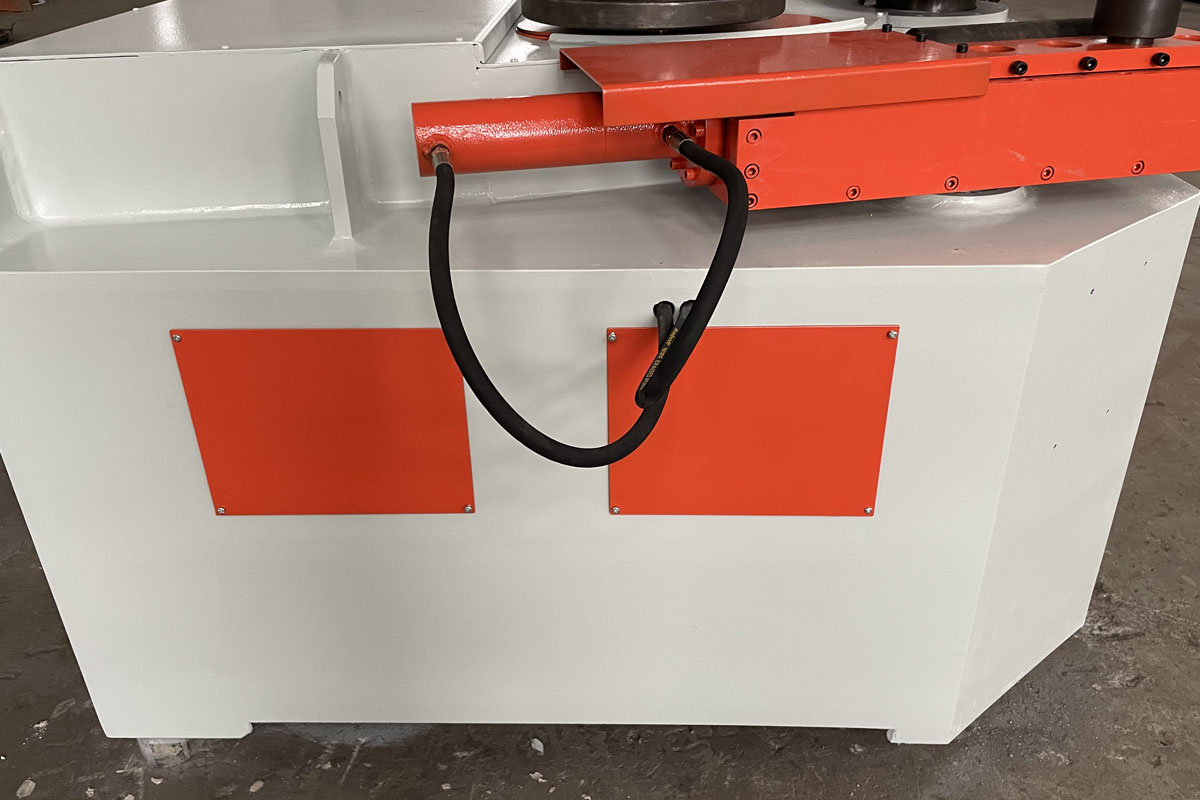Profile bending machine is a mechanical equipment used to bend various profiles. It is mainly composed of several parts such as fuselage workbench, mold, hydraulic system, control system, etc. By adjusting the parameters of the bending mechanism, the bending processing of profiles of different specifications can be achieved.

Performance and function of each component of profile bending machine
Fuse body workbench1. The fuselage workbench is the main structure of the profile bending machine and should have sufficient strength and rigidity to ensure the stability of the equipment during operation.
2. Regularly check the connection parts of the fuselage to ensure that the fasteners such as bolts and nuts are tightened reliably to prevent loosening from affecting the accuracy and safety of the equipment.
Bending mold1. The bending mold is a key component of the profile bending machine, and its quality and precision directly affect the quality of the bent profile.
2. Select a suitable bending mold according to different profile specifications and bending requirements. The size and shape of the mold should match the profile to ensure the bending effect.
3. When installing the bending mold, ensure that the installation position of the mold is accurate and reliably tightened. At the same time, pay attention to the gap adjustment of the mold to avoid problems such as uneven deformation of the profile during the bending process.
4. Regularly inspect and maintain the bending mold, such as cleaning the oil and debris on the surface of the mold, checking the wear of the mold, etc. For molds with severe wear, they should be replaced in time to ensure the bending quality.
Hydraulic system
1. The hydraulic system is the power source of the profile bending machine, and its performance directly affects the working efficiency and stability of the equipment.
2. Before using the hydraulic system, check the level and quality of the hydraulic oil to ensure that the hydraulic oil meets the equipment requirements. At the same time, check whether the hydraulic pipeline has leakage, and if there is leakage, it should be handled in time.
3. When operating the hydraulic system, operate in accordance with the equipment operating procedures to avoid damage to the hydraulic system due to improper operation.
4. Regularly maintain the hydraulic system, such as replacing hydraulic oil, cleaning hydraulic filters, etc. At the same time, pay attention to checking the seals of the hydraulic system. If damaged, they should be replaced in time to prevent hydraulic leakage.
Control system
1. The control system is the core component of the profile bending machine, and its performance directly affects the degree of automation and operating accuracy of the equipment.
2. Before using the control system, you should be familiar with the operation interface and control process of the equipment to ensure that you can operate the equipment correctly. At the same time, check whether the connection line of the control system is normal. If it is loose or damaged, it should be handled in time.
3. When operating the control system, you must operate it in accordance with the equipment operating procedures to avoid damage to the control system due to improper operation. For example, when setting the bending parameters, you should set them reasonably according to the specifications and bending requirements of the profile to avoid setting too large or too small parameters to affect the bending quality.
4. Regularly maintain the control system, such as updating the control system software, checking the hardware equipment of the control system, etc. At the same time, pay attention to backing up the data of the control system to prevent data loss.
Transmission system
1. The transmission system is an important component of the profile bending machine, and its performance directly affects the working efficiency and stability of the equipment.
2. Before using the transmission system, check the lubrication of the transmission parts to ensure good lubrication. At the same time, check whether the tension of the transmission belt or chain is appropriate. If there is any looseness, adjust it in time.
3. When operating the transmission system, operate it in accordance with the equipment operating procedures to avoid damage to the transmission system due to improper operation. For example, before starting the equipment, the transmission system should be adjusted to the neutral position, and then gradually loaded to avoid transmission shock.
4. Regularly maintain the transmission system, such as replacing the lubricating oil of the transmission parts, checking the wear of the transmission belt or chain, etc. For transmission parts with severe wear, they should be replaced in time to ensure the normal operation of the equipment.
Conclusion
When operating the profile bending machine, choose the appropriate profile according to production needs. Due to profiles of different specifications and materials, their bending performance will be different. Therefore, when selecting profiles, full consideration should be given to parameters such as bending radius and angle to ensure that the products produced meet quality requirements.
